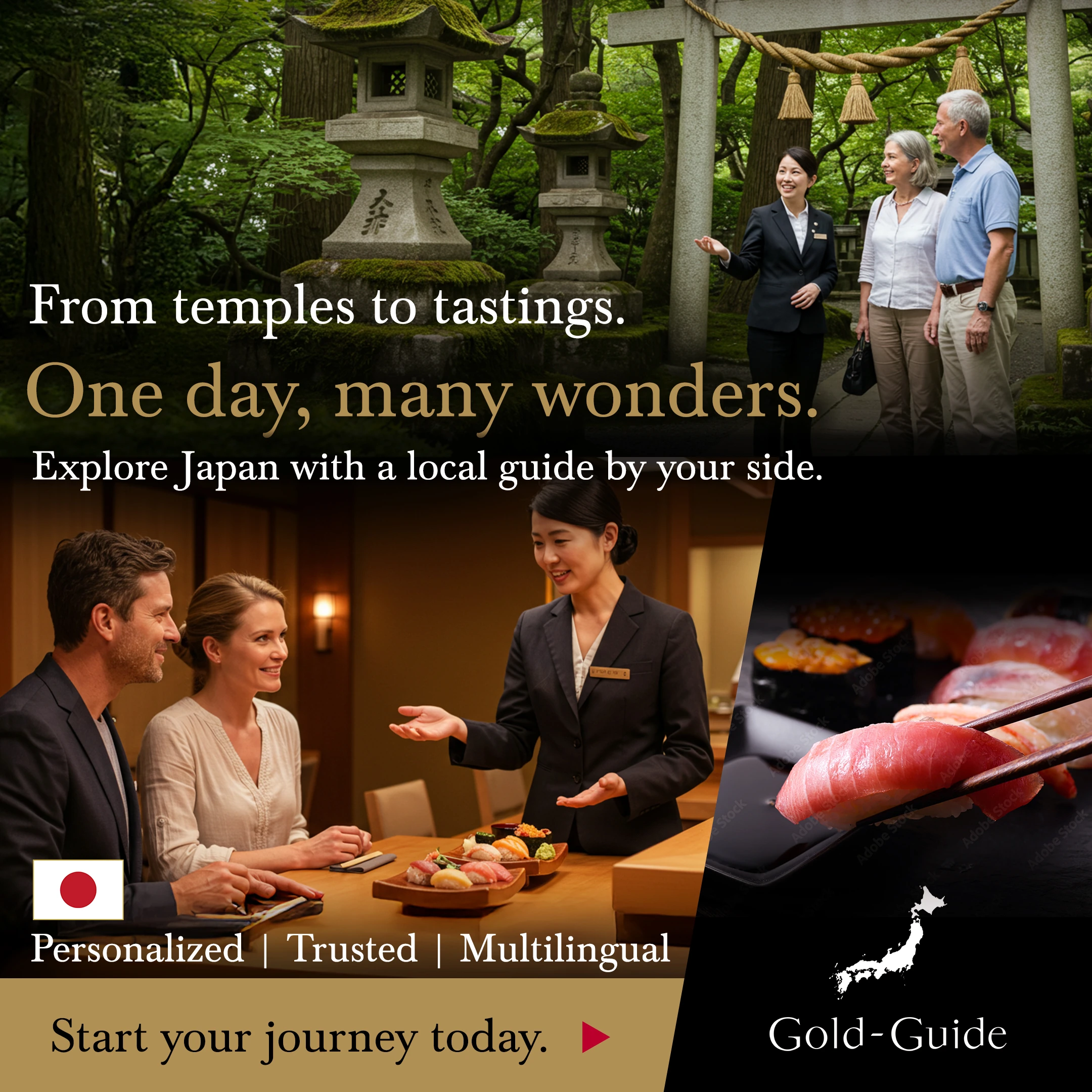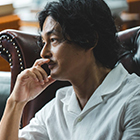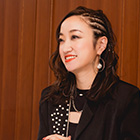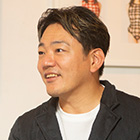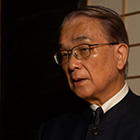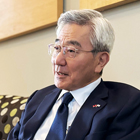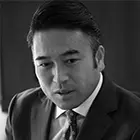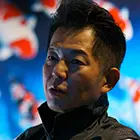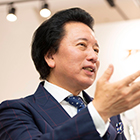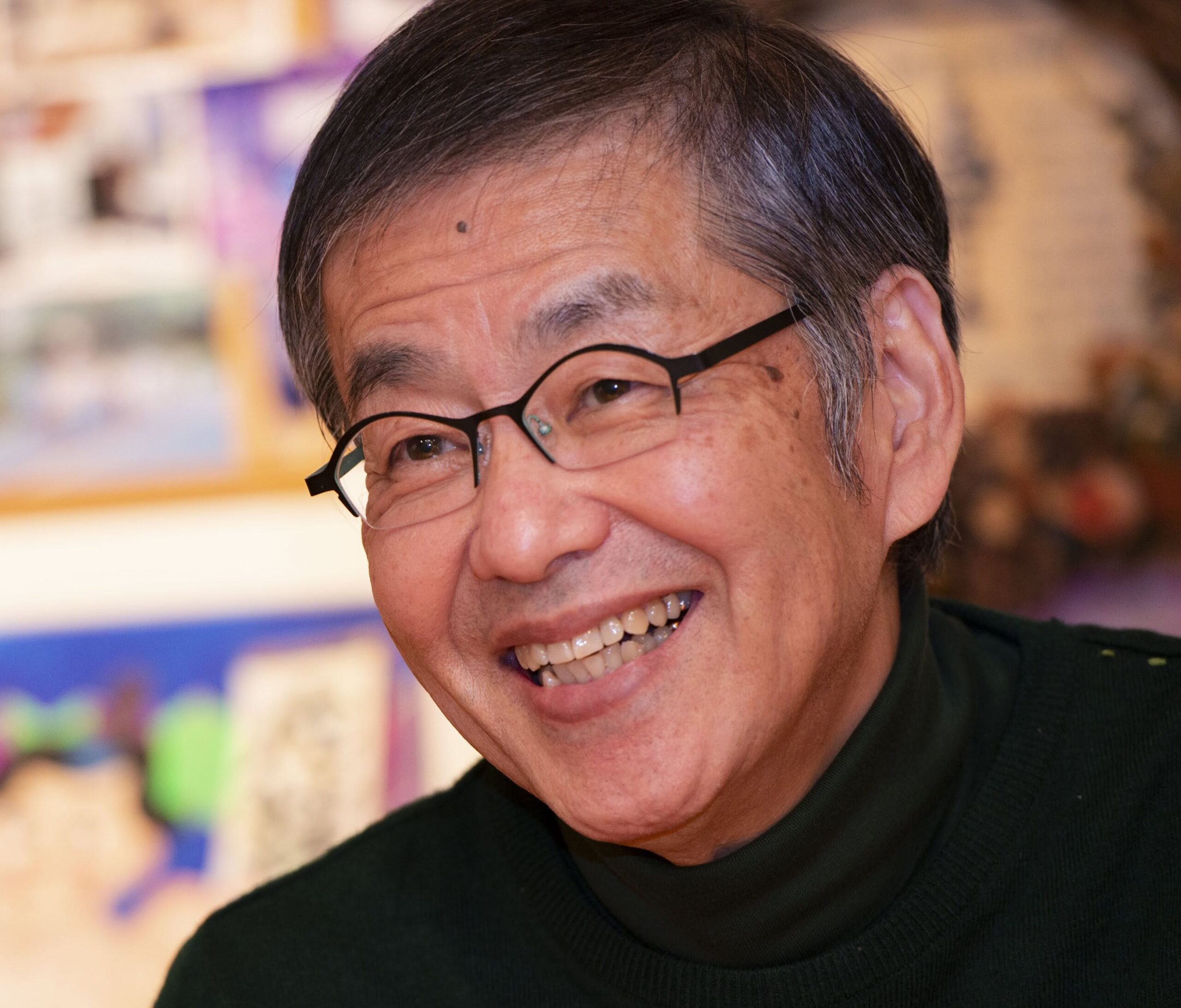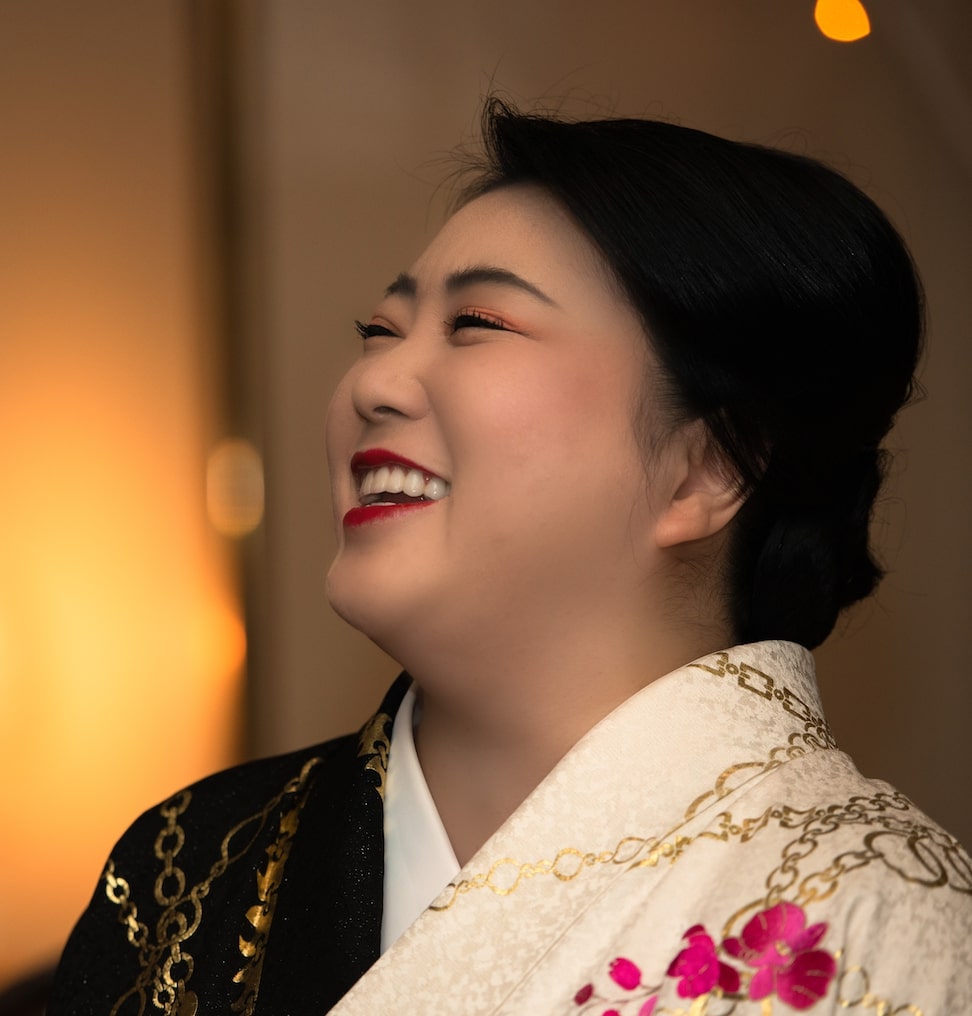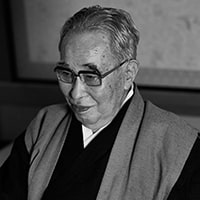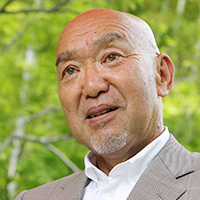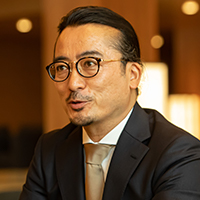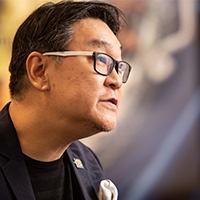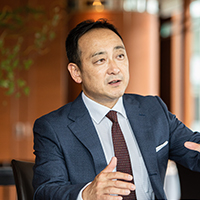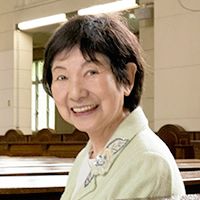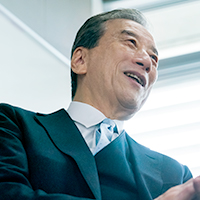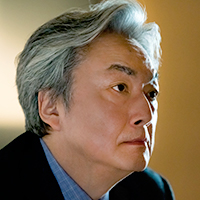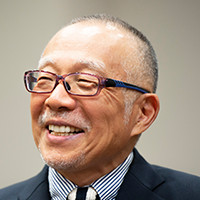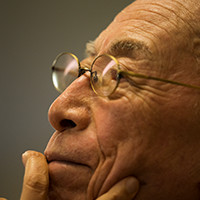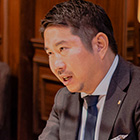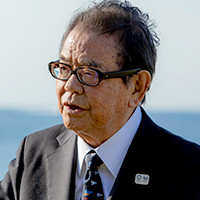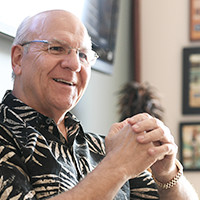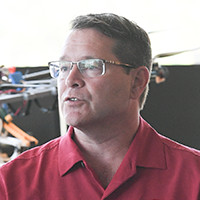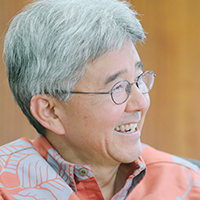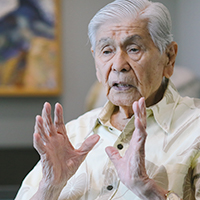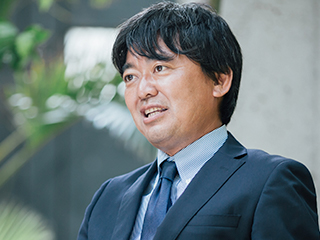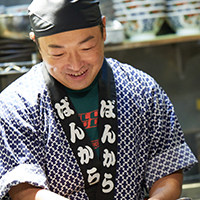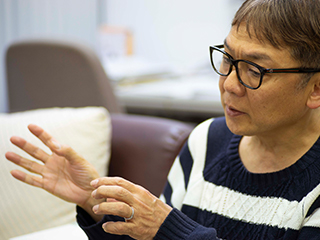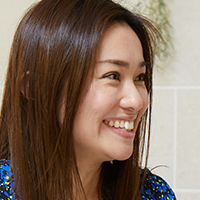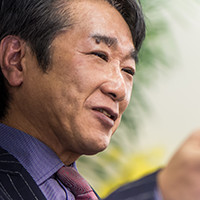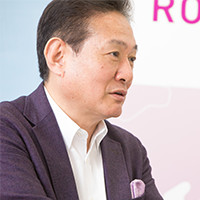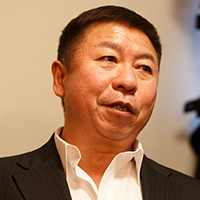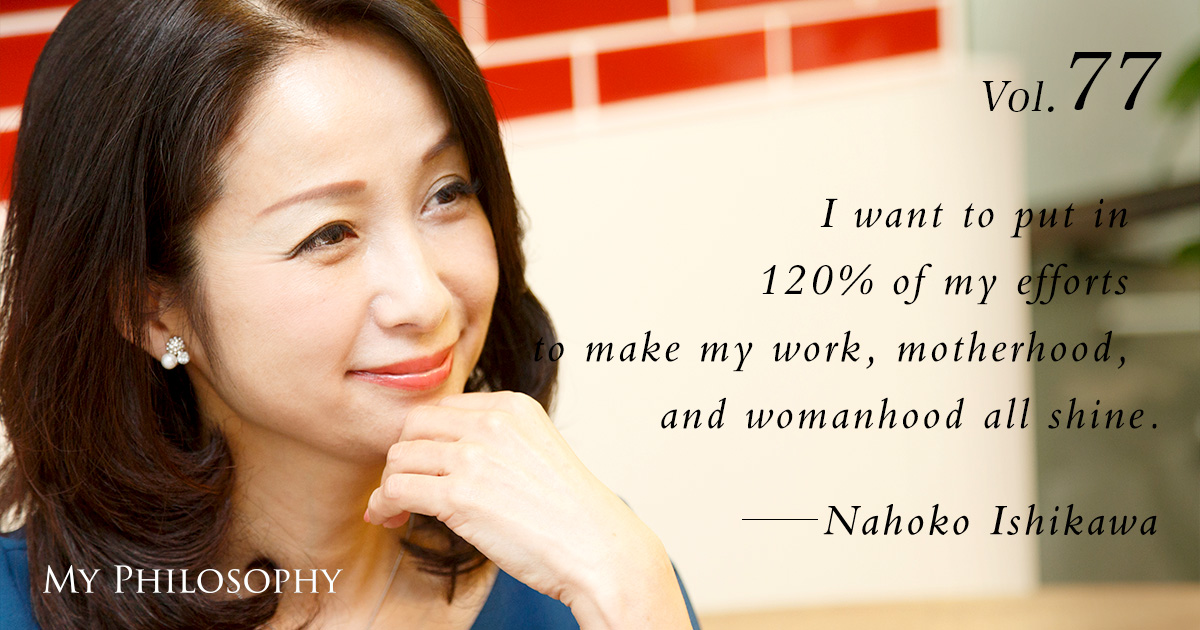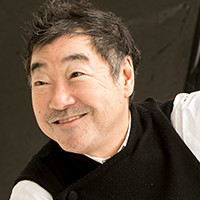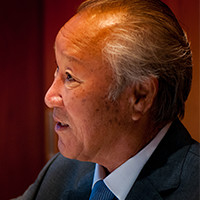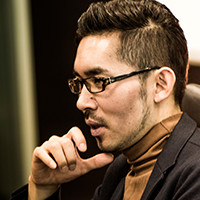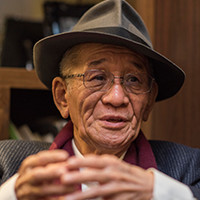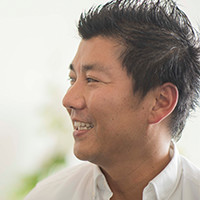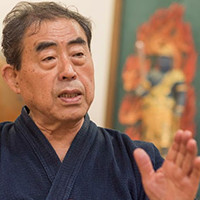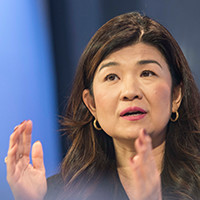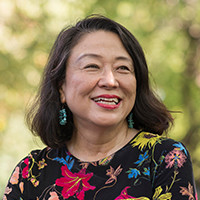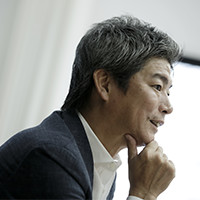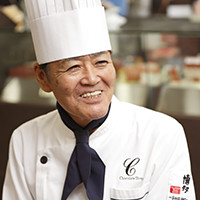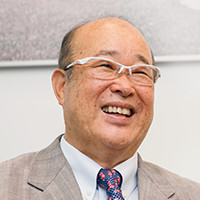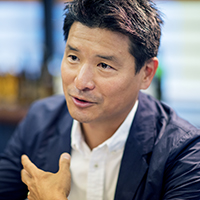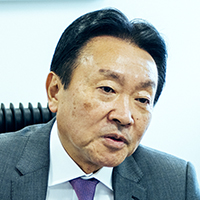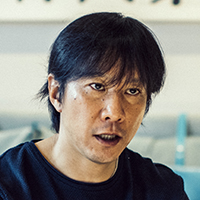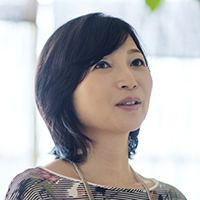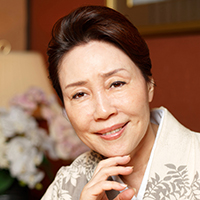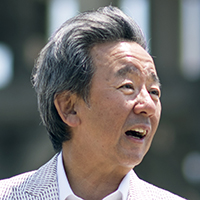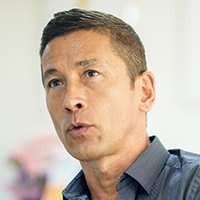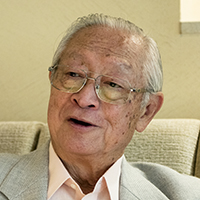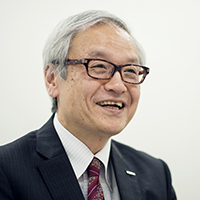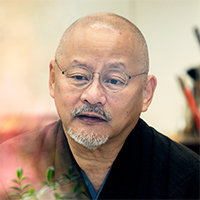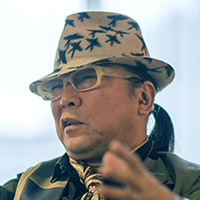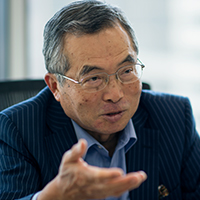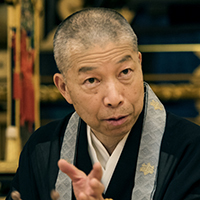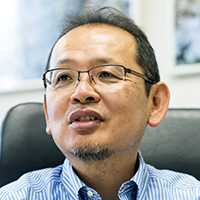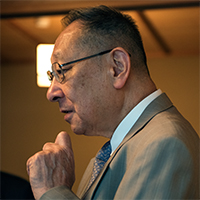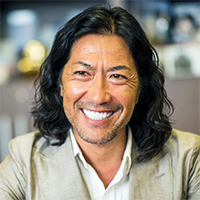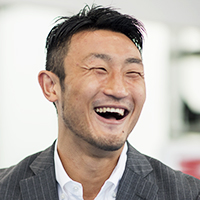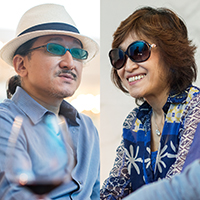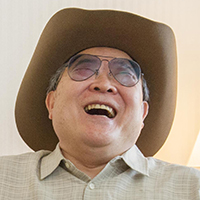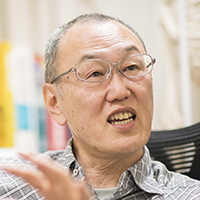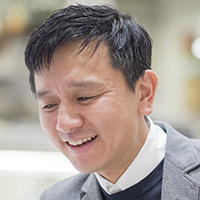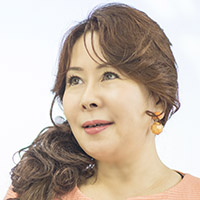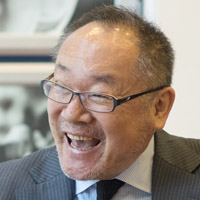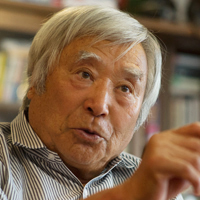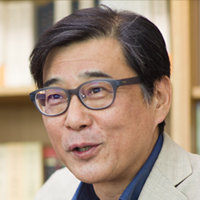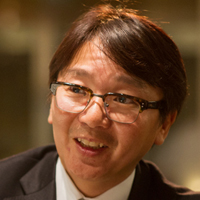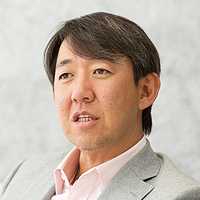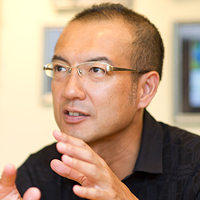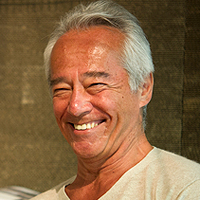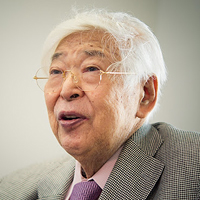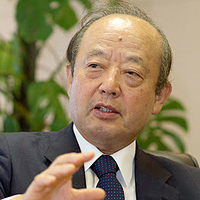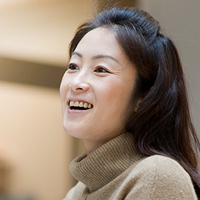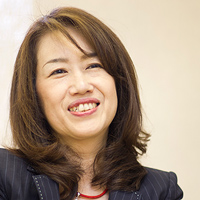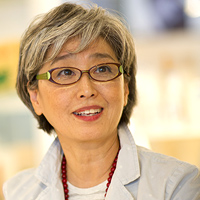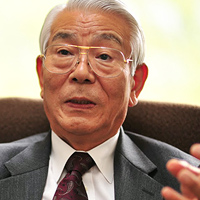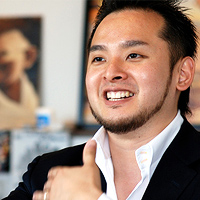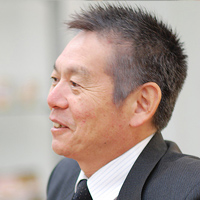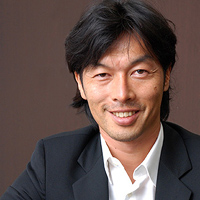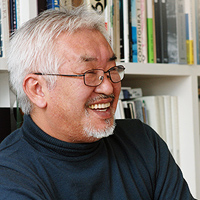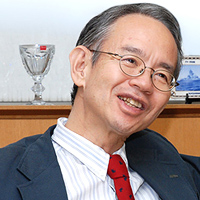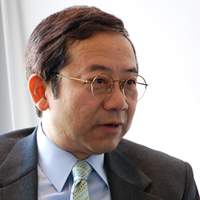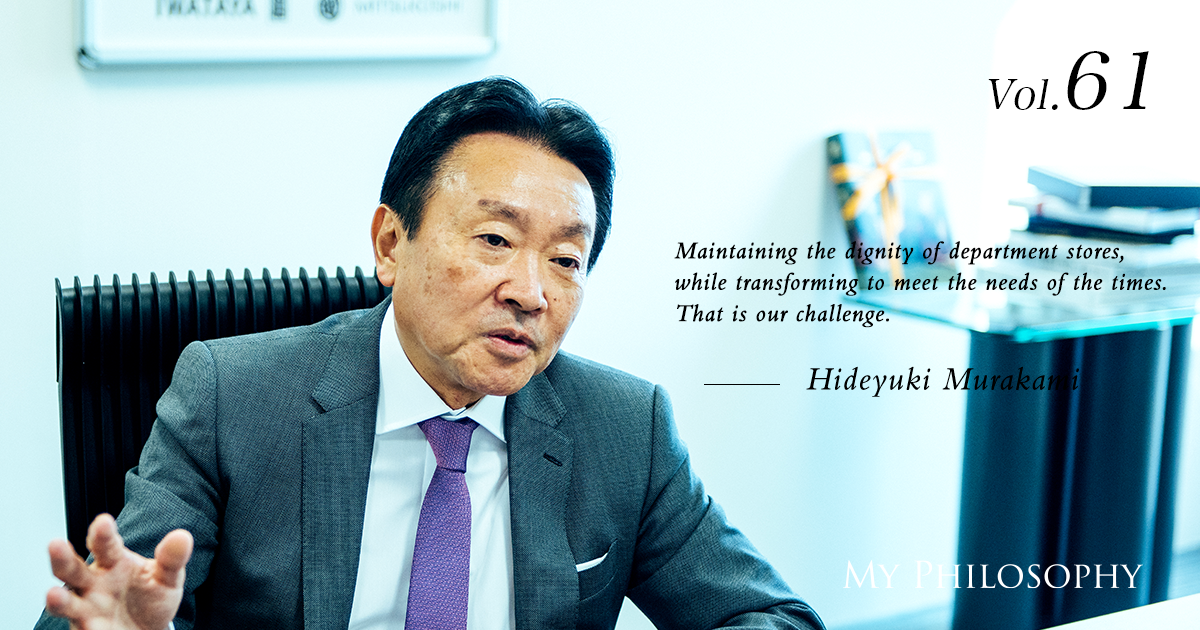
Mr. Hideyuki Murakami, who has devoted his career to the department store industry, shared his experiences from his time in New York and his aspirations for the future.
Profile
Vol.61 Hideyuki Murakami
President and CEO of Iwataya Mitsukoshi Ltd. | Executive Vice President of Isetan Mitsukoshi Holdings Ltd.
Born in Tokyo in 1956, he graduated from Keio University with a degree in law. In 1979, he joined Mitsukoshi Ltd. (now Isetan Mitsukoshi Ltd.). He was in charge of purchasing women’s clothing, women’s accessories, and select apparel for many years. From 1994 to 2001, he spent about seven years working in the United States. After serving as President and CEO of Sendai Mitsukoshi Ltd., Executive Officer of Isetan Mitsukoshi Holdings Ltd., and General Manager of Mitsukoshi Ginza Store, he was appointed President and CEO of Iwataya Mitsukoshi Ltd. and Executive Vice President of Isetan Mitsukoshi Holdings Ltd. in April 2016.
*Titles and positions are as of the time of the interview (July 2017).
History of Mitsukoshi

In 1904, the first Western-style department store in Japan was born, which is now known as Mitsukoshi. The origins of Mitsukoshi date back to 1673, when Takatoshi Mitsui, who hailed from Matsusaka City in present-day Mie Prefecture, opened a kimono shop called Echigoya. This was the origin of today’s Mitsui Group. At that time, kimono shops did not display their merchandise at the storefront. Instead, they would listen to the customers’ requests and then select products to show them. The business operated on credit, with no fixed prices, and the final price was determined through negotiation, making it a high-barrier trade.
Takatoshi Mitsui revolutionized this model by introducing “cash sales at fixed prices with goods displayed at the storefront,” shifting the business to cash sales with fixed prices and catering to a broader, unspecified clientele. This innovative business model made Echigoya the most prosperous kimono shop in Edo (modern-day Tokyo). However, over time, competition among kimono merchants intensified. With the downfall of traditional clients after the end of the Edo period and the rapid rise in prices leading to increased costs, the business fell into a serious crisis. As a result, during the subsequent restructuring of the Mitsui family’s businesses, Echigoya was separated from the Mitsui family.
During that period, a group of Keio University alumni, including Osuke Hibi, who was employed by Mitsui Bank, provided funding to establish Mitsukoshi Gofukuten Co., Ltd., a modernized version of the former Mitsui Kimono Shop. Hibi, who had become the Senior Managing Director, had visited leading department stores in Europe, such as Harrods in the UK and Bon Marché in France, and went on to create Japan’s first Western-style department store. This transformation from a kimono shop marked a major revolution, the second founding of the business.
Before I joined the company, Mitsukoshi held the top spot in retail sales in Japan, but in 1972, Daiei surpassed Mitsukoshi’s sales, and by 1979, Daiei became the first retailer to exceed 1 trillion yen in sales. However, following the collapse of the economic bubble, Daiei lost its position, and in the 2000 fiscal year, Seven-Eleven Japan took the top spot. In the most recent retail sales ranking for the 2016 fiscal year, Aeon ranked first, followed by Seven & i Holdings, Fast Retailing, and Yamada Denki, with Mitsukoshi Isetan Holdings ranking fifth, and Amazon Japan entering the rankings in sixth place, exceeding 1 trillion yen in sales. This shift in rankings over time highlights the constant change in the retail industry’s leading players and the repeated corporate reorganizations that have occurred. Echigoya survived by transforming itself into a Western-style department store. Mitsukoshi, which proudly declared itself Japan’s first department store over 110 years ago, has overcome several crises by adapting to changes. Today, when department stores are said to be facing tough times, the question remains whether they can evolve into a format that meets consumer needs.
The Purpose of Department Stores

Today, with an abundance of goods available everywhere, consumers only buy what they need when they need it. In an era where the ultimate convenience of e-commerce (EC) allows items to be ordered anytime and anywhere via a smartphone and delivered directly to one’s home, the challenge lies in how department stores can attract customers and what value they can offer. There’s still much research to be done on e-commerce, which is an indispensable foundation. However, while EC is suitable for purchasing everyday items, high-value, quality products—those that convey the maker’s concept and philosophy and require an explanation or special tailoring skills—are inherently meant to be bought in physical stores. Department stores must provide the essential value that makes customers want to purchase these items in-store, even if they can be bought online.
Two years ago, I was in charge of a project in the Head Office’s Product Coordination Department to create a luxury-focused e-commerce site called “NORENNOREN.” With the firm belief that only Mitsukoshi Isetan could do this, we endured tremendous hardships, taking about a year to negotiate directly with the heads of 50 overseas brands, ultimately securing 25 of them. During negotiations, many of the maisons (luxury fashion houses) expressed that while they would like to partner with Mitsukoshi Isetan once they had established their own online platforms, they couldn’t do so at that time. They said, “European maisons thrive in the special environment of a store, with salespeople who love the products. On the internet, we cannot fully convey the value of our products.” It reinforced my belief that the best way to communicate a brand’s tradition and values is through knowledgeable salespeople directly interacting with customers at the store.
Time Spent in the United States
Especially after World War II, department stores played a crucial role in offering value to customers by being the first to import Western culture and branded goods. They introduced many overseas brands to Japan for the first time. Although this role has primarily been taken over by trading companies since 2000, when I joined the company, it was still the era of department stores. My mission from headquarters was to find the next big brand after Tiffany and Coach, both of which were already contracted brands.
Among the various brands I approached, the one I competed with trading companies for until the end was Kate Spade. The brand wanted to establish a Japan branch and open standalone stores in Ginza and Aoyama, but for us, who were committed to doing business within the department store framework, opening standalone stores wasn’t an option. On the other hand, the trading companies were willing to invest and open such stores, so in the end, the trading company secured the contract.
Regarding Tiffany, when I was stationed in New York, there was a discussion about establishing a Japan branch. Mitsukoshi’s strategy was to manage the Japan branch by holding a 13.9% stake in Tiffany’s headquarters, making Mitsukoshi the largest shareholder of Tiffany. While stationed there, I was the liaison with Tiffany’s headquarters and worked around the clock due to the time difference with Tokyo. It was undoubtedly challenging, but it was also an excellent opportunity to learn about American business practices, and during my seven years there, I established my business style.
As for Coach, at that time, Mitsukoshi held the exclusive distribution rights in Japan. We taught them marketing strategies that incorporated New York craftsmanship and could rival European brands, appealing to modern consumers. Coach then experienced rapid growth and has now become a brand with sales far exceeding 100 billion yen.
Challenging a New Style

When Mitsukoshi tried and successfully sold new brands, many of them, including Vivienne Tam, Jill Stuart, and Kate Spade, eventually signed contracts with trading companies on the condition that standalone stores would be opened. In response, we shifted our strategy and, in 1996, created a select shop called “NEW YORK RUNWAY” within the department store, based on the concept of introducing New York’s lifestyle to Japanese customers.
For the first two years, sales were poor, and we accumulated several hundred million yen in inventory. As a result, we sought advice from Ira Neimark, the former chairman of our partner, the luxury department store Bergdorf Goodman in New York. He introduced us to Josh Patner, who had experience in fashion offices, and we began by revising the concept. When I took him around Ginza and Shinjuku to study the tastes of Japanese women, he remarked, “Everything about Japanese women’s taste is ‘cute.'” In contrast, New York women prioritize looking cool, stylish, and chic, with no emphasis on “cute.” So, we decided to add a touch of “cute” to the New York style.
At the time, the fashion trend in New York was dress-down. Wall Street businessmen were no longer wearing ties, and women were favoring a style of dresses with cardigans instead of jackets. When we introduced this style at NEW YORK RUNWAY, it quickly caught on in Japan as well, leading to excellent sales. Fashion, too, requires the ability to read changes in the times and the expertise of marketing professionals. The core concept of a department store is to diligently gather information, select and purchase products, and sell them to generate profits. If this is abandoned, the department store would merely become a space rental business.
The Role of the President

One of the key responsibilities I emphasize as president is building external relationships. This includes two main areas: participating in economic organizations and engaging in local community activities. This year, I assumed the position of Chairman of the “Toshinkai,” an organization dedicated to the development and revitalization of Fukuoka’s Tenjin district. Through this role, I have increasingly realized the importance of contributing to the local community. While internal company matters are certainly important, it is also a president’s unique role to establish external relationships and enhance the company’s image.
Iwataya Mitsukoshi was newly established in 2010 through a merger. Anchored by two key stores in Fukuoka, the commercial hub of Kyushu— the Iwataya Main Store in Tenjin and Fukuoka Mitsukoshi—the company also operates a suburban department store, Iwataya Kurume, in Kurume, the central city of Chikugo. Additionally, we have 16 small, community-focused stores, covering the Fukuoka metropolitan area extensively. Seven years after the merger, Iwataya celebrated its 80th anniversary last year, which was the year I arrived. This year marks the 20th anniversary of Fukuoka Mitsukoshi—a significant milestone. I am determined to aggressively push forward in building Kyushu’s overwhelmingly No. 1 department store group.
When I first met Mr. Sugiyama, with whom I had no prior acquaintance, I was reminded of a quote by Akio Morita, the founder of Sony: “I don’t intend to meet ‘people without greed’ or ‘people without curiosity.’” Before our interview, I was sent a copy of “The Courage to Act (Kodo suru Yuki)”, likely as a way for me to understand the person Sugiyama is before the interview. When I met him in person, he was exactly as his book portrayed—an honest, intensely aggressive, and curiosity-driven young man, almost dazzling in his energy. I felt a sense of closeness, perhaps because we both had experience living in the United States, and his son is around the same age as mine, who also grew up abroad.
This interview marks the 61st edition of “My Philosophy.” Although the view might change with each successive interview, even if the initial goal was 100 interviews, I’ve heard that the target has now been raised to 1,000. I am excited to see how Mr. Sugiyama will channel the energy he absorbs from meeting 1,000 people and how it will lead to further growth and transformation in him.
Hideyuki Murakami, President and CEO, Iwataya Mitsukoshi Ltd.
I love Japanese department stores. They offer a sense of “security” and “hospitality,” which are services Japan can proudly present to the world. In this interview, I had the valuable opportunity to learn about the history of Mitsukoshi and the modern role of department stores.
Mr. Hideyuki Murakami has leveraged his experiences in New York in his management approach. I felt that working and living abroad sharpens negotiation skills and decision-making abilities. It made me want to take on more overseas projects myself. Since last year, I’ve had more opportunities to work in Fukuoka, and I am currently focusing on the Fukuoka business community in “My Philosophy.” Perhaps it’s due to the nature of the region, but there seems to be a strong entrepreneurial spirit among the people here. Each time I meet business leaders in Fukuoka, I grow fonder of the city.
July 2017, at Iwataya Mitsukoshi Ltd. Editor: Naomi Kusuda. Photographer: Sebastian Taguchi








